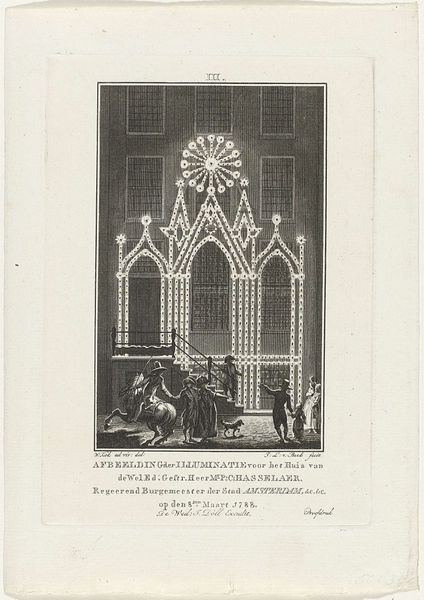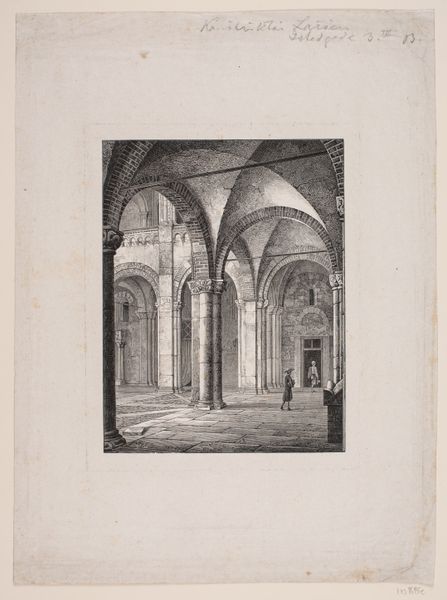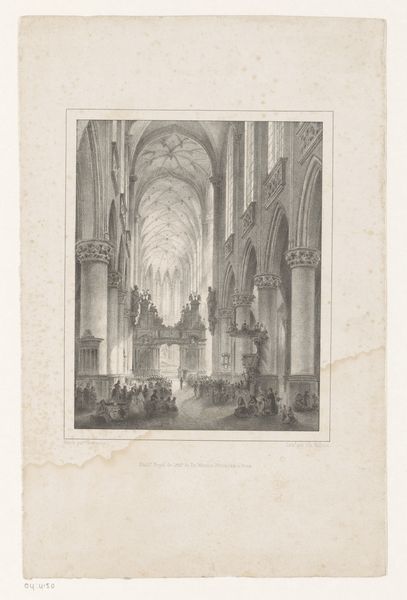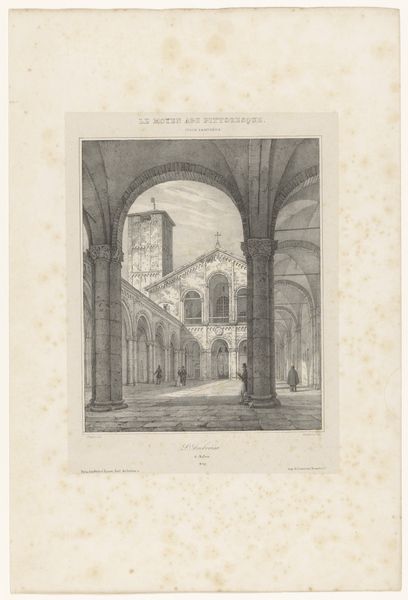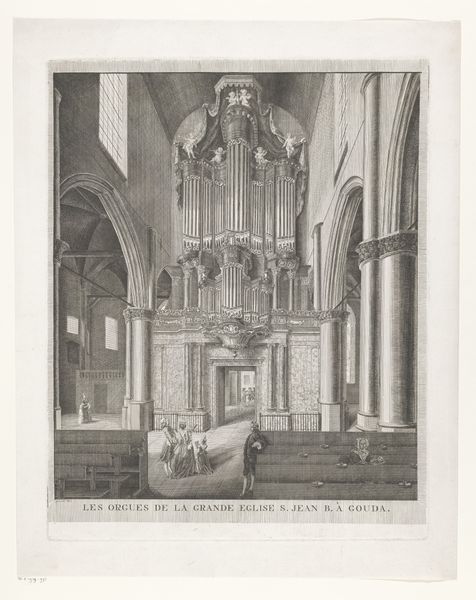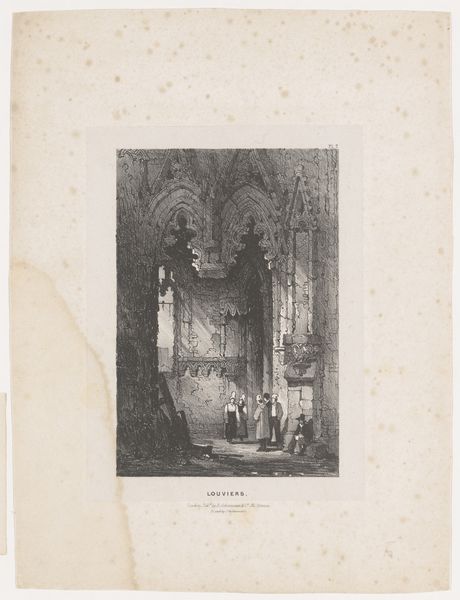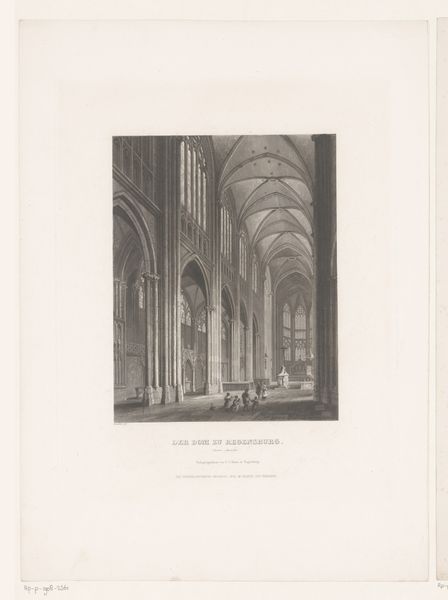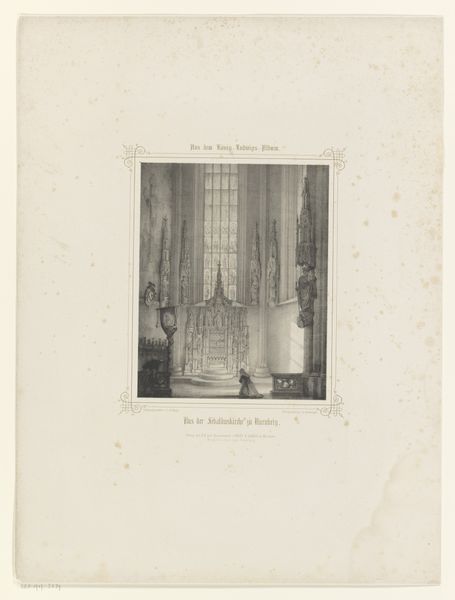
drawing, print, engraving, architecture
#
drawing
#
neoclacissism
# print
#
old engraving style
#
perspective
#
cityscape
#
history-painting
#
engraving
#
architecture
Dimensions: height 181 mm, width 132 mm
Copyright: Rijks Museum: Open Domain
Editor: This engraving, titled "Interieur van de Saint Eustache kerk" and created between 1772 and 1792 by Jean François Janinet, is incredibly detailed. I'm struck by the perspective, which really emphasizes the height and grandeur of the church. What formal elements do you find most compelling? Curator: The linear perspective is certainly key. Janinet has skillfully used converging lines to create a sense of depth, drawing the eye toward the high altar. The repetition of the vertical architectural elements – the columns, the arches – also establish a clear rhythm. What do you notice about the use of light and shadow? Editor: The limited tonal range makes it a bit difficult, but the light seems to be filtering in through the large windows, creating pockets of illumination that highlight certain areas and leave others in shadow. How does this contribute to the overall composition? Curator: Precisely. The strategic placement of light directs the viewer's gaze, emphasizing key structural details. Note how the darker areas help define the volume and three-dimensionality of the architectural forms. The tonal contrasts clarify the structure and direct the eye, establishing a visual hierarchy that is absolutely central to the picture's meaning. Editor: So, the artist is using light not just to depict reality but to structure our viewing experience? Curator: Exactly. And consider the circle that contains the artwork: a framing device whose presence cannot be ignored in our formal analysis. Its geometric purity interacts, in terms of lines and angles, with the strong rectangular forms within the building. Editor: That's fascinating. I initially just saw it as a realistic depiction, but I can now see how much thought went into organizing the visual elements. Curator: By considering the formal aspects, we can understand not only what is represented but also how it is presented and, thereby, the artist’s choices become much clearer.
Comments
No comments
Be the first to comment and join the conversation on the ultimate creative platform.
